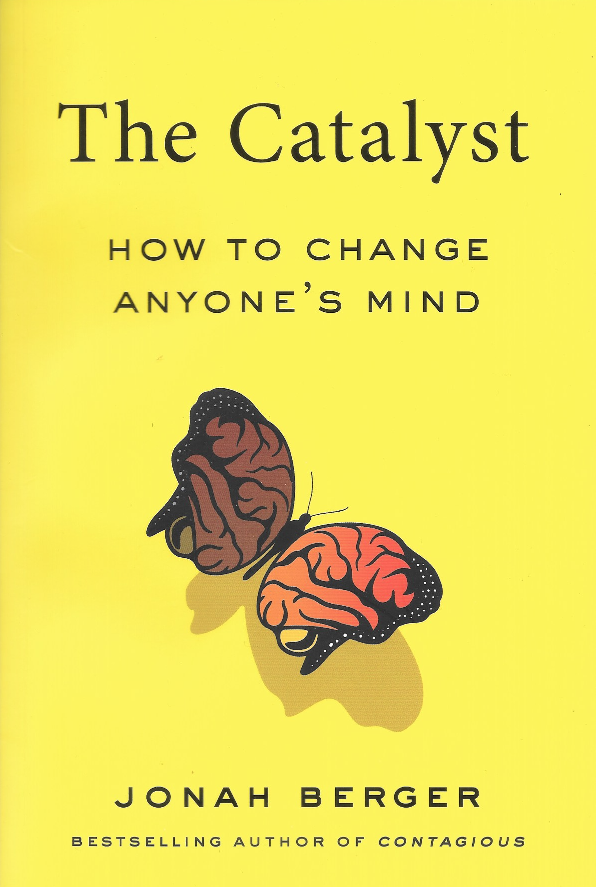The one sentence summary
You can change anyone’s mind if you correctly understand the five barriers to change and remove the roadblocks that are preventing it.
WHAT THE BOOK SAYS

- Catalysts are change agents who know it’s not about being more persuasive or providing more information. It’s about removing roadblocks and reducing barriers to change. Instead of asking ‘What could I do to try to convince someone?’, ask ‘Why haven’t they changed already? What’s stopping them?’
- There are five main barriers to change, or roadblocks:
1. Reactance: when pushed, people push back. Catalysts encourage such resistors to persuade or convince themselves
2. Endowment: if it ain’t broke, don’t fix it – people are wedded to what they are already doing. Catalysts highlight that inaction isn’t as costless as it might seem.
3. Distance: too far from their backyard, people tend to disregard. New information only works if it is within someone’s zone of acceptance, but if it is too far away it actually increases opposition and is therefore counterproductive. Good catalysts shrink distance
4. Uncertainty: Seeds of doubt slow the winds of change. People hit the pause button if they are uncertain about what a change will yield. Catalysts overcome this by making things easier to try.
5. Corroborating Evidence: sometimes the recommendation of one person simply isn’t enough. Catalysts find reinforcement from collective proof.
- In summary, catalysts reduce Reactance, ease Endowment, shrink Distance, alleviate Uncertainty, and find Corroborating Evidence. The stages form the acronym REDUCE
WHAT’S GOOD ABOUT IT
- Reactance is triggered when you try to restrict people’s options, so instead allow for agency. Provide a menu so they can make a choice, ask, don’t tell, highlight a gap, and start with understanding. Active listening leads to proper trust – the basis for true change. This involves using minimal encouragers, asking open-ended questions, harnessing effective pauses, reflecting what you heard, and labelling emotions.
- Endowment (a form of loss aversion) can be eased by surfacing the cost of inaction and burning the ships so that going back is no longer an option.
- Distance can be mitigated by finding the movable middle of the zone of acceptance, asking for less (just a small change at first), and switching the field to an-unsticking point (something both parties can agree on).
- Uncertainty acts like a pause button. This can be alleviated by trialability. Harness freemium (making things free to start with, then charging a premium later), reduce upfront costs, drive discovery and then make it irreversible.
- Corroborating Evidence takes many forms. Pebbles and boulders provide an analogy for weak and strong attitudes. Changing these either requires just a little proof or a lot more. Work out which. This determines whether to use a sprinkler (for pebbles) or fire hose approach (for boulders). It’s important to work out who else to involve, when to space evidence over time (reminders bunched together work better than spread out ones), and how best to deploy resources.
WHAT YOU HAVE TO WATCH
- Nothing. This is well researched, clear and practical to apply.
